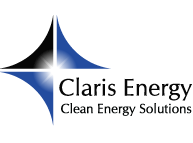![]() Many people have questions about the possible extension of 179D and 45L incentives in 2014 and the coming years. Though some steps have been made in this direction, it is still early to tell whether such stimuli will be available for the execution of energy efficient building projects in the future.
Many people have questions about the possible extension of 179D and 45L incentives in 2014 and the coming years. Though some steps have been made in this direction, it is still early to tell whether such stimuli will be available for the execution of energy efficient building projects in the future.
What is the Current State of These Tax Incentives?
The expiration date of the Energy Policy Act (EPAct) has come and gone. The 179D tax incentive expired on December 31, 2013. Many construction companies, architects, designers and other professionals benefited from the deductions of up to 1.80 dollars per square foot of commercial building constructions or renovations.
The 45L incentives were other types of incentives provided under EPAct. The two stimuli helped for the execution of numerous projects in the years from 2006 to 2013 and they changed the US urban landscape for the better.
The future of the two policies is still uncertain but many professionals in the niche remain optimistic. Decision makers in the field have made some steps in the right direction but it still appears to be too early to tell what the outcome is going to be.
Important Decisions about the Future of the Energy Efficiency Stimuli
The first proposal for extending the taxation stimuli came in 2012. The proposed extension even featured an increase in the size of the 179D deduction to three dollars per square foot. The requirements for qualification, however, were also upgraded. This proposal was unfortunately turned down.
The next extension proposal came in the form of EXPIRE – the Expiring Provisions Improvement Reform and Efficiency Act. The EXPIRE Act was approved by the Senate Finance Committee on April 3, 2014.
The next step in the process involves the consideration of the full US Senate. EXPIRE Act failed to pass on May 16, 2014 because it was obstructed by the Republicans. Thus, EXPIRE remains blocked by Senate and has temporarily been frozen. Optimism about its revival still exists but the EXPIRE Act may have to be modified, in order to gain approval and extend some of the popular provisions for the execution of energy efficiency projects.
What can Construction Companies and Investors do Meanwhile?
There is no clarity about the future of the 179D tax deduction and the 45L credits. While Senate is taking the time to consider the extension, architects and construction company owners can still reap the benefits of projects executed in the years from 2006 to 2013.
Any project that has been completed in the period from January 1, 2006 to December 31, 2013, can potentially qualify for the tax incentives. Familiarizing yourself with the prerequisites and making sure you have all of the necessary documentation will both be mandatory for benefiting from the deduction.
Investors in such projects can still benefit from the 179D and the 45L incentives, even if the project was completed several years ago. Getting qualified assistance for putting all of the paperwork together is going to be one of the prerequisites for making the most of such financial stimuli.
Steve Nanos
Latest posts by Steve Nanos (see all)
- LED Lighting – A Great EPAct 179D Qualification Possibility - February 3, 2015
- 45L Credit Requirements for Begun Constructions - January 29, 2015
- Can Section 179D Incentives Help Businesses Save a Lot of Money? - January 27, 2015

 609.275.8484
609.275.8484